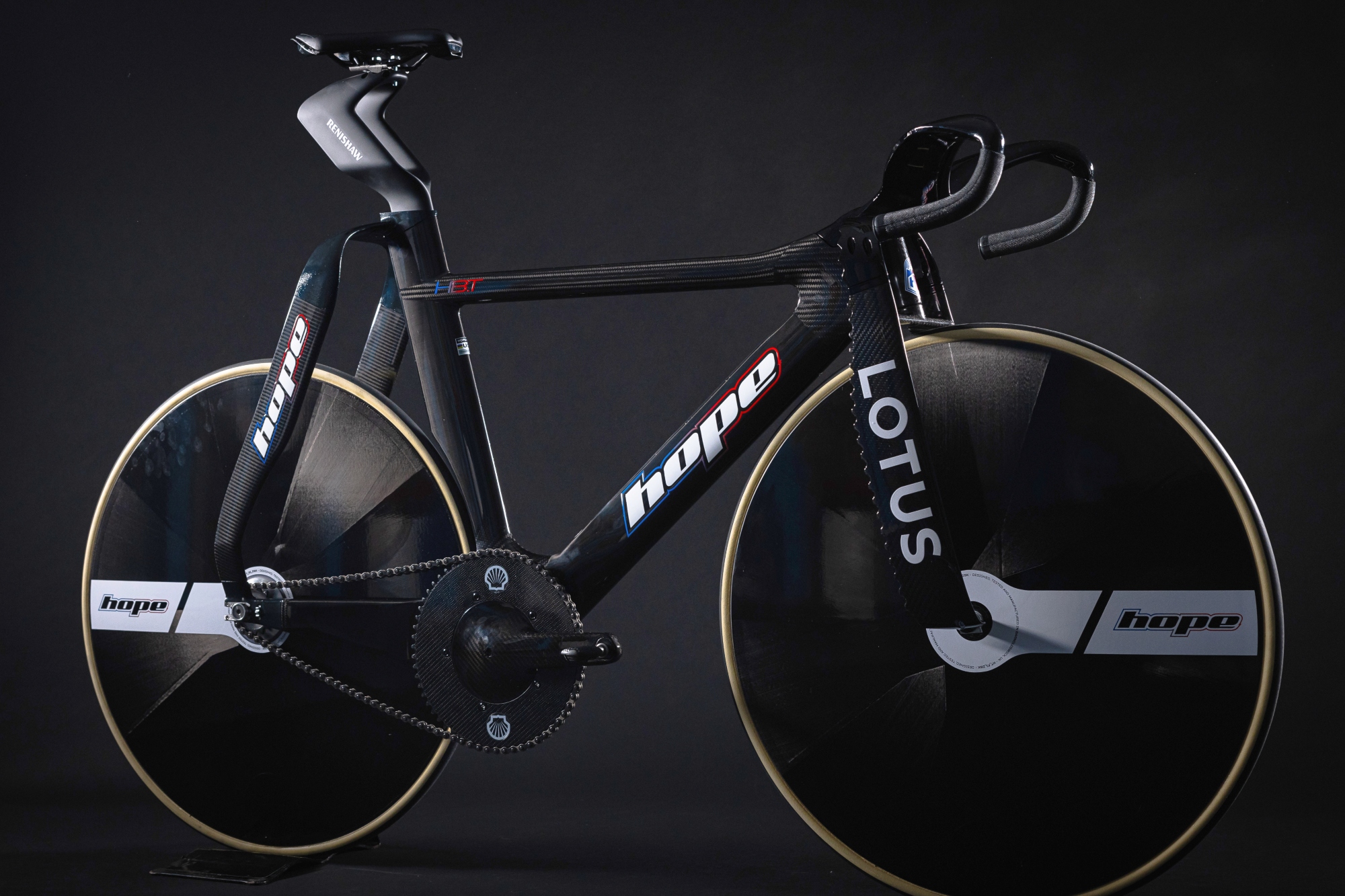
British Cycling has unveiled the bike that Team GB will be riding for the Paris 2024 Olympic Games.
The cutting-edge track bike, which has been developed in partnership with Lotus Engineering, Renishaw, and Hope Technology will see its competition debut next month in the 2023 Track Cycling World Championships in Glasgow.
The previous iteration of the British engineering collaboration was ridden to gold medals by Jason Kenny, Laura Kenny, Katie Archibald and Matthew Walls - so lets take a look to see if the latest generation bike is ready to win on the biggest stage.
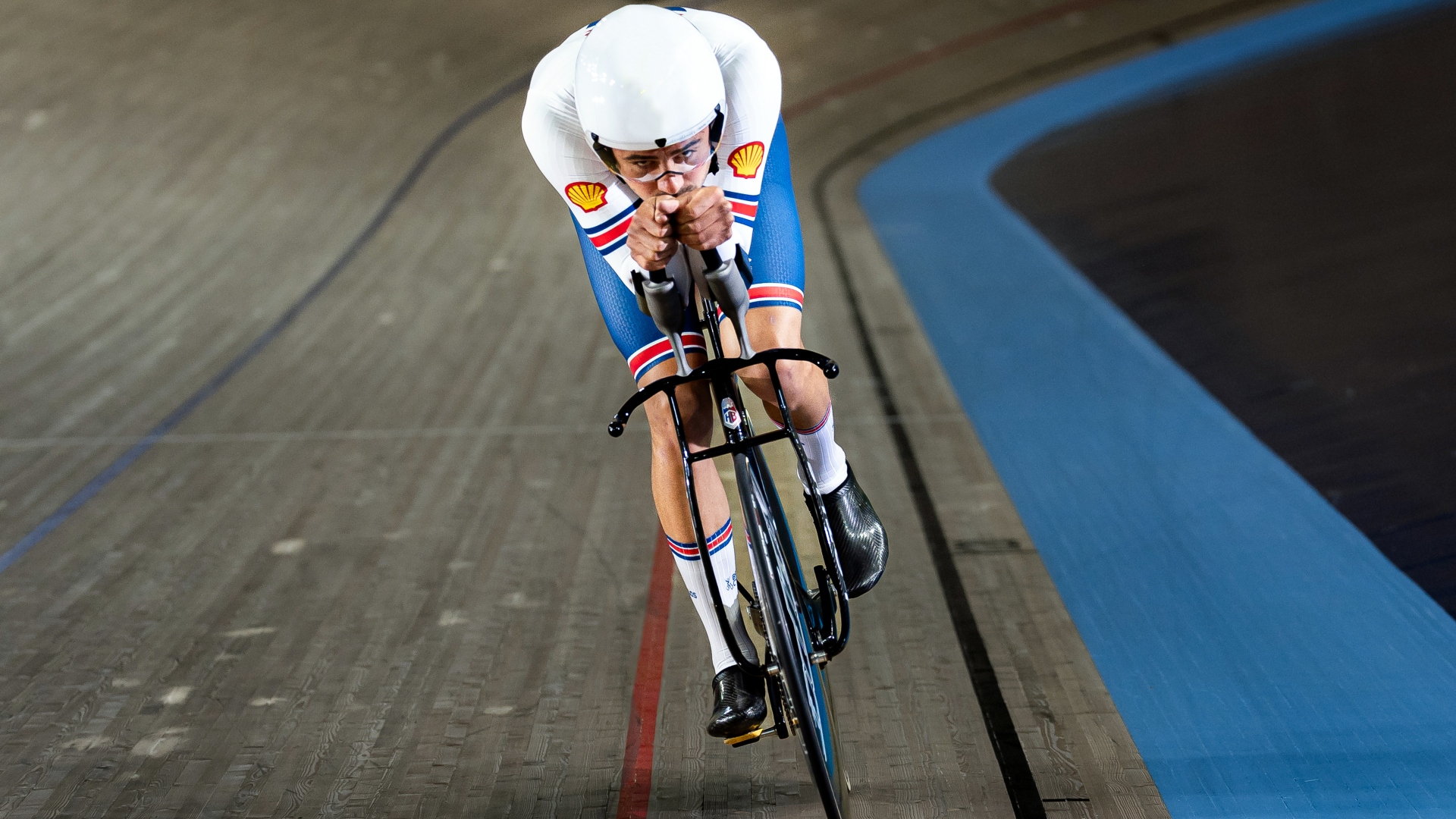
Aerodynamic redesign
If you missed even one generation of Olympic Track Cycling, you would be forgiven for wondering what on earth this machine is. So much has changed from the standard(ish) track frames of 10 years ago. With so much going on, let's unpick the pieces of this aerodynamic puzzle from front to rear.
One design ethos that has stuck with the new Hope-Lotus track bike is the exceedingly wide fork blades. The reason for giving the front wheel such a wide birth is to reduce high-pressure air buildup around the front wheel, in this case, by giving the turbulent airflow as much room as possible. The fork blades also adjoin right at the top of the headtube - we think to help improve stiffness.
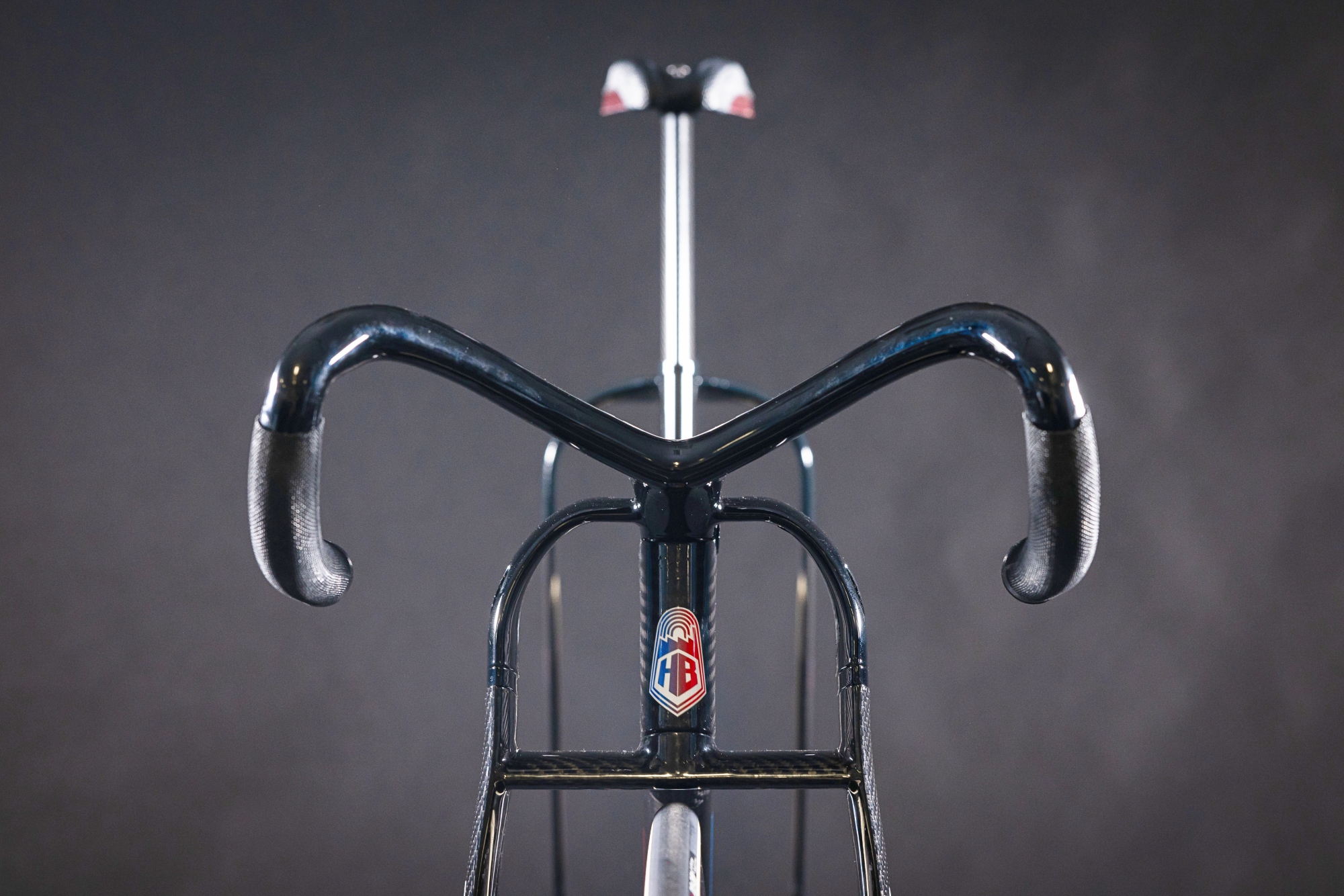
Track bikes are normally used with two different setups. This is due to the same framesets being used in pursuit races, where riders are allowed TT-style extensions, and bunch races such as the Omnium, where riders must use drop handlebars.
The new drop bars are striking, to say the least. The design team has ditched any form of stack in the headtube and instead brought any height needed to the front of the bike through the use of a riser bar.
New pursuit bars have also received tweaking, with an ever-narrowing base bar, alongside the custom-looking aero extensions we are so used to seeing on pro-level time trial and track bikes.
Noteworthy too is that both sets of bars are now manufactured out of carbon fiber, as opposed to the bling 3D-printed titanium of the last generation's bikes.
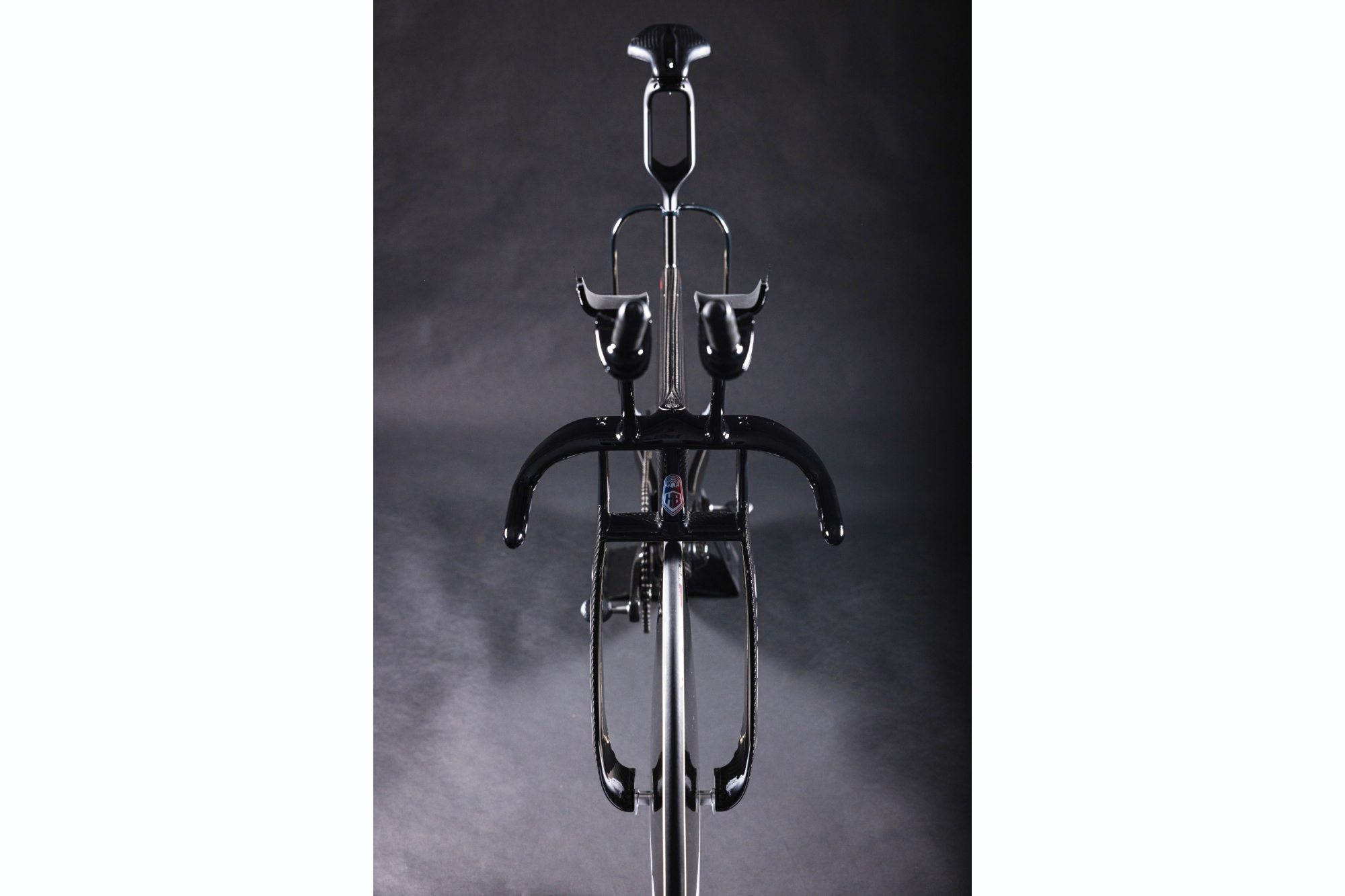
The lack of titanium handlebars also seems to have allowed for a slightly neater integration between the top tube and the cockpit, which should improve airflow.
Main frame shapes have all stayed pretty similar, at least to the naked eye. The rear triangle also seems to be giving the rear wheel plenty of space, which once again should help diffuse any high-pressure air build-up around sticking points on the frame.
The strangest of all the design features though, is that seatpost - and it is very reminiscent of the 'Iso-Flow' system on the Trek Madone SLR. Though this will undoubtedly be all in the name of speed, with comfort not much of a consideration on the track.
Looking ahead to Paris 2024
Sitting at the pinnacle of track cycling, the Olympic Games is as much a technological arms race as it is a physical one, with countries from all around the globe putting years of research and development into the event.
Team GB has always been at the forefront of cycling tech development, dating back to the Chris Boardman days, so the team knows what it takes to maintain a world beating programme.
The Great Britain Cycling Team Performance Director, Stephen Park CBE alluded to the importance of not being complacent, saying, “To continue to win medals year-on-year at the highest level, we need everything to come together at exactly the right time: the best riders, the best equipment, the best technology. We have been working with Lotus, Hope and Renishaw for the past two Olympic cycles as we believe that together we have the world-leading expertise needed to deliver what we believe to be the fastest track bike in the world. "
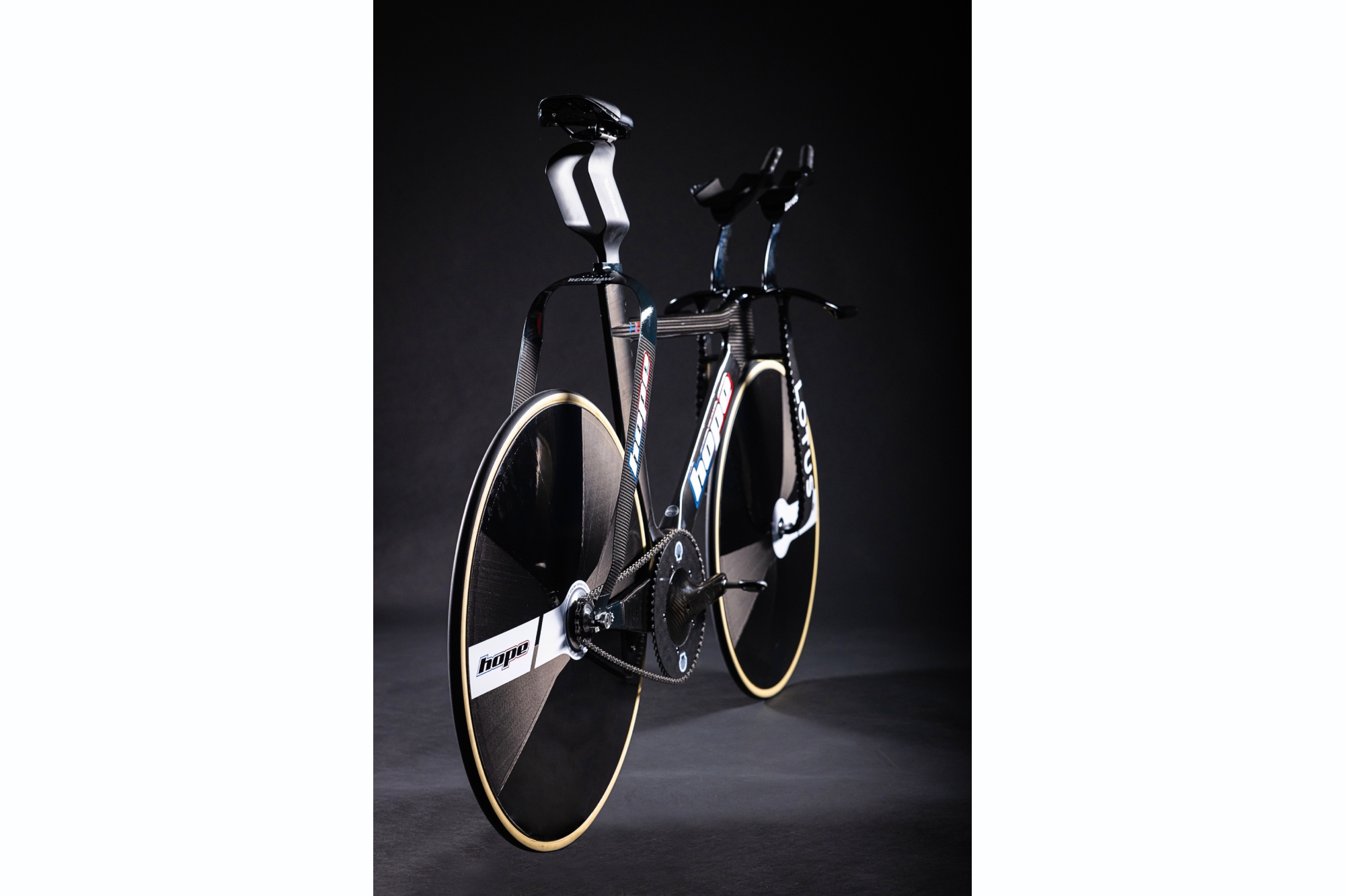
Stephen Park CBE went on to speak about the ongoing partnerships with Lotus Engineering, Renishaw and Hope Technologies, saying "Our relationship with Lotus Engineering, Hope Technology and Renishaw is going from strength to strength. Their combined high quality manufacturing standards, renowned lightweight design, aerodynamic efficiency and their keen eye for finer details help us to unlock valuable marginal gains, which make all the difference come race day. This is the most advanced bike that has ever been ridden by British athletes”.
British designed, British made
The new track bike is also one of British toil and expertise, with the three development parties all being located in the UK. With Hope Technologies base up in Lancashire, Ian Weatherill, Co-owner of Hope Technology said, “The whole Hope workforce, based in Barnoldswick, Lancashire is proud to have helped design and then manufacture the frame in-house in the UK to continue British success in international competition.”
Though manufacturing costs are higher in the UK, it's clear that a no-expense spared project such as this one has opted for the highest tolerance manufacturing, which will undoubtedly allow Team GB to push the limits of the materials at its disposal.
Acknowledging the high costs, British Cycling thanked supporters, saying "the delivery of the Hope-Lotus track bike would not be possible without the support of UK Sport and National Lottery funding. UK Sports Institute also work with the Great Britain Cycling Team to research and refine bike design. This research and development work covers all aspects of bike design from aerodynamics to ergonomics."







